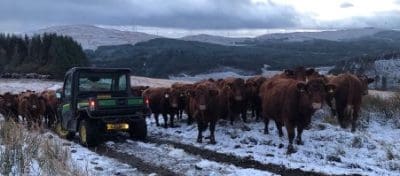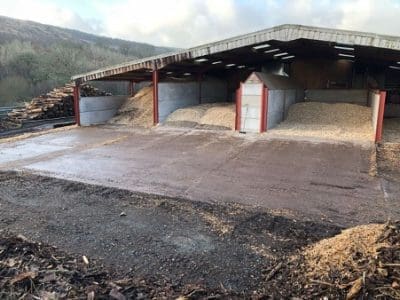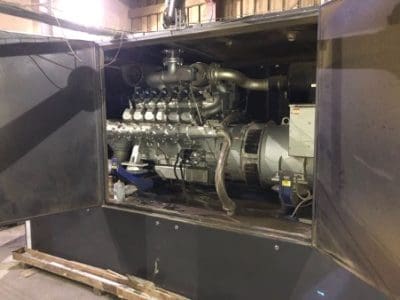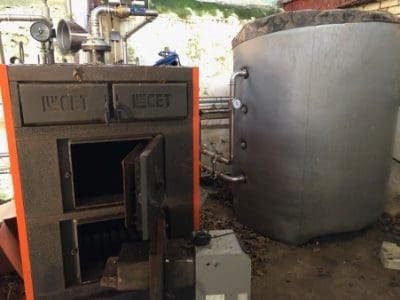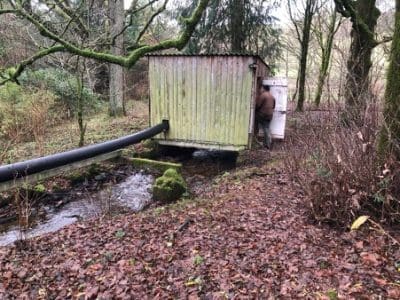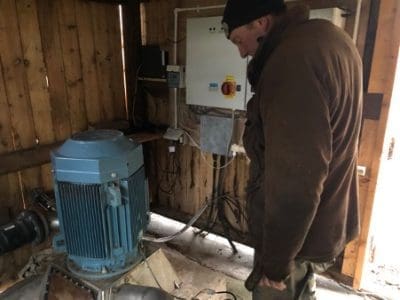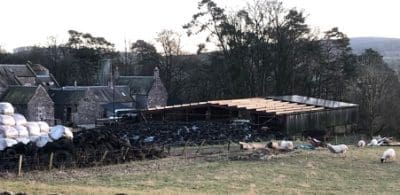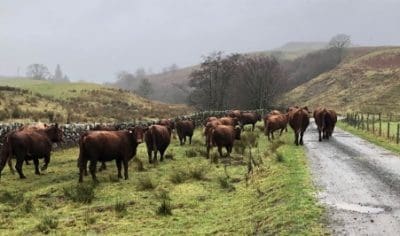Ten years ago, this 5000-acre hill-farm in southern Scotland ran 3000 sheep and 600 head of beef cattle.
At that time the livestock produced 95 percent of the income with renewable energy (from mini hydro) contributing about 5 percent.
Today, the farm’s renewable energy mix includes wind turbines, forestry, Combined Heat and Power (CHP), sawdust biomass residential heating, mini-hydro and solar power which collectively produce 70 percent of the total farm income.
Forestry is a vital renewable resource which contributes income from high grade timber, wood chips for pulp and waste logs to drive the CHP power generator and home heating systems. The forestry also attracts carbon credit income.
When a second wind farm is installed in about 2 years’ time, the renewable energy income will be more like 90pc of total farm receipts. If you had to describe this business taking into consideration its primary source of income, then it would be a multi-source power station with cattle and sheep as a side-line.
One decade ago, hill-farm land was worth less than half the value of the more productive flat land in the UK.
The new opportunities for increased income presented by renewable energy systems and forestry have pushed the value of this type of hilly country to about 80% of the best country or close to double its earlier value.
The very best part of a wind farm is that the landowner does not have to do anything except agree to allow the development on their land. The developer does the rest and the landowner gets a very handsome annual payment as well as a share of the income. They also retain the use of the land under the turbines for grazing their livestock.
This amazing revolution in the business structure of this and many other farming enterprises in the UK has been made possible by the confluence of a host of factors including technological advances in renewable energy systems, rising energy prices, a desire by society to reduce its dependence on fossil fuels (and therefore the emission of greenhouse gases (GHG)) and that never ending search by landowners for new ways to extract more income from their property by improving productivity using sustainable methods while enhancing the intrinsic value of the land.
Waste logs from the forestry enterprise are chipped, dried, and fed into a hi-tech “furnace” which produces gas from the wood which is then burned to drive the generator. The heat generated is retained and used to dry the wood chips.
The gas generated from the wood chips is fed into this engine which drives the turbine to produce electricity which is sent straight to the local grid.
One of the biproducts of the CHP unit is a large quantity of fine wood particles which are collected and delivered to silos at 3 residential sites where they are burned in furnaces like the one above to produce hot water which is piped into the residences for central heating.
The farm has 5 of these mini hydro systems which are beautifully simple and extremely efficient. This one provides all the power needs for the main homestead complex at this farm with plenty left over to feed into the local grid. After turning the turbine, the water simply pours out the bottom of the shed and rejoins the creek.
Two things Scottish hill farms have plenty of is slope and running water, even at the top of the hills. These very small streams are dammed to divert some of the water into the black polythene pipe seen in the photo above. After a vertical fall of about 100 meters or more the water is directed into a turbine which drives and electric motor sending power to the homestead and the grid.
These mini hydro systems are extremely simple to construct and maintain. Rising electricity prices across the UK mean that these units are very profitable. This power source also recharges the family’s Tesla model S batteries while it is parked in the garage overnight. In the future all farm vehicles and machinery will be converted to electric power as suitable models become available.
This cattle shed is used to house stock over the winter. When the roof needed replacing, it seemed logical to use solar panels as the primary roofing material. While Scotland is not the best location for solar panels it is nevertheless another opportunity to generate power for the adjoining residences and the local grid at minimal cost.
Cattle and sheep still have important roles to play in this renewable system as biological lawn mowers protecting the forests and energy infrastructure by reducing the risk of grass fires during the summer as well as contributing conventional streams of income from livestock sales.
Neil Gourlay, who’s family owns this farm likes to say that with all these new enterprises operating together, there is never a bad day on the farm. If it is raining or snowing then the hydro water supplies are being topped up, if it is windy then the wind turbines will be making more money, if it is a sunny day then the grass and forest will be growing well, the solar panels will be generating a profit and the livestock will be gaining weight.
Australian farmers and graziers need to have a good hard look at their enterprises to identify any potential opportunities for new sources of income through renewable resources. The obvious one for most parts of Australia is solar power which has now become so cheap to install that it seems logical that a large proportion of landowners should be able to efficiently generate all their own power needs and where possible be sending income generating power supplies back into their local grids.


